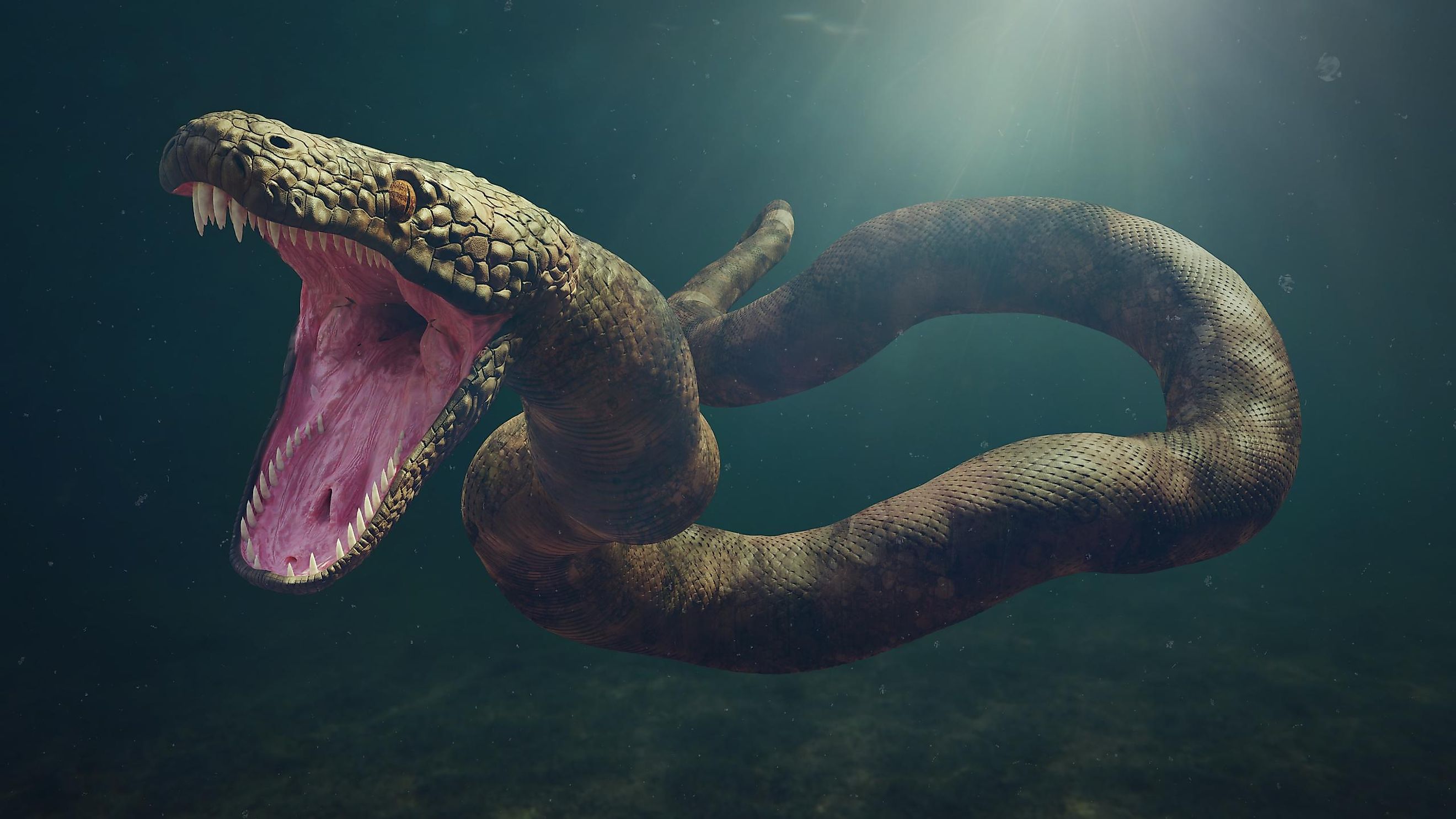
9 Of The Most Dangerous Extinct Animals To Have Roamed The Earth
Millions of species currently exist on this Earth. Some are thriving, while others are barely hanging on. But given the extraordinary passage of time (the earliest microbes appeared approximately 3.7 billion years ago, and the first animals arose some 800 million years ago), all good things must come to an end. Oftentimes, this is the result of enormous dominoes of fate falling in the form of natural disasters; other instances involve an incorrigible shift in the climate that cannot be adapted to. And, of course, there is the never-ending, zero-sum battle for resources that all sentient life must partake in. Whatever the case, the disappearance of distinct lifeforms is usually a tragedy. However, from the lens of a modern human, perhaps it was a blessing in disguise that these nine dangerous creatures met their demise.
Megalodon
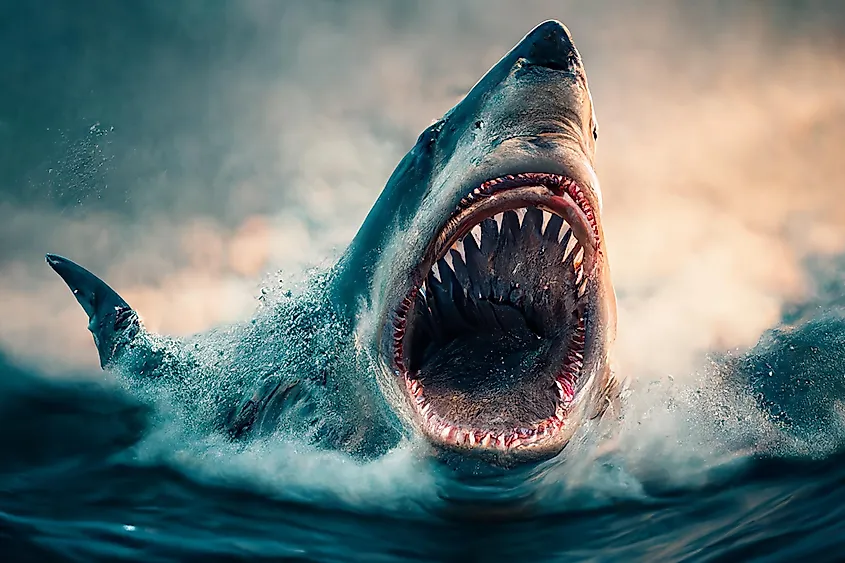
The mighty megalodon (Carcharocles megalodon) was the largest shark to have ever stalked the oceans and the largest predator of any kind during its reign. It is estimated to have lived between 23 to 3.6 million years ago and occupied nearly every part of the open water world. "The Meg," as it has become known in modern pop culture, measured upwards of 60 feet in length (with an average of 44 to 56 feet for males and 34 to 47 feet for females), with teeth as long as seven inches, possibly weighed as much as 50 tons, and it has been calculated that its jaw could have produced a bite force of 40,000 pounds! To put this all in perspective, today's great white sharks are but a third the size of the formidable megalodon.
Deinosuchus
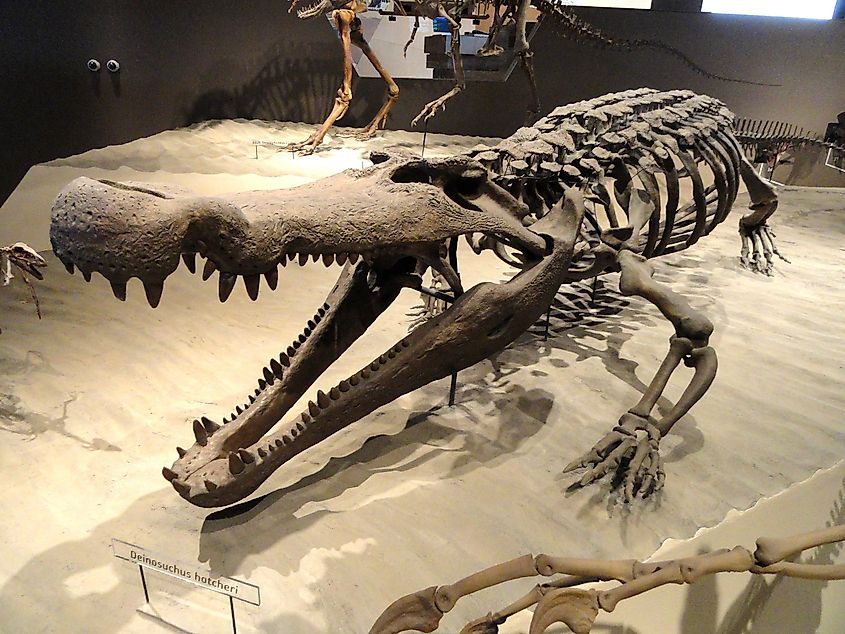
Contemporary crocodiles kill approximately 1,000 people each year, making them one of the deadliest animals in the world. So imagine if we were still faced with the deinosuchus – a giant ancestral cousin (although it actually more closely resembles alligators) nicknamed the "terror crocodile." Fossil remains indicate that the deinosuchus could grow up to 33 feet in length, with teeth as long as bananas. Thankfully, its terrifying era was between 75 and 82 million years ago. At that time, at least three distinct species were spread across the West (from Montana to Northern Mexico) and the Atlantic coastal plain (from New Jersey to Mississippi). Bite marks in dinosaur skeletons show that this killer croc was willing and able to take on any creature in its domain.
Andrewsarchus
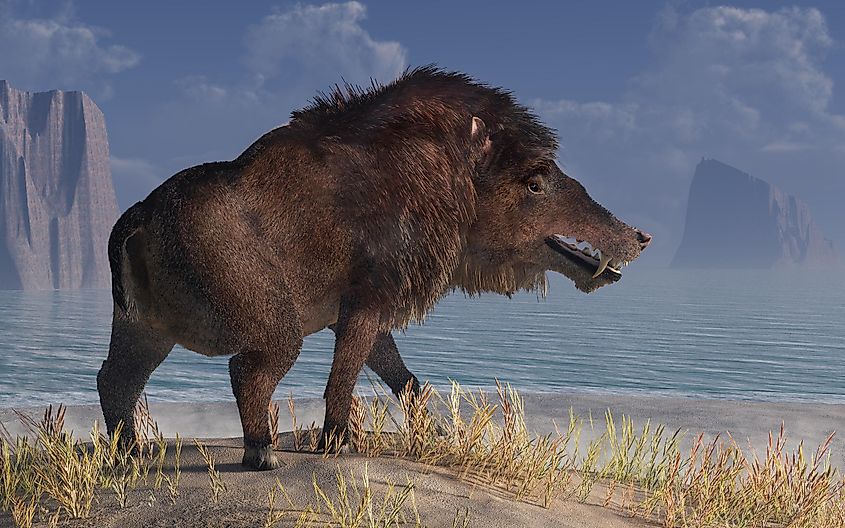
This entry is the most speculative of the entire list, but given the possibilities (and my own nominal bias), Andrewsarchus deserves a shout-out. The only fossil evidence yet to be uncovered of this terrestrial mammal is a three-foot-long, somewhat wolf-shaped shape. Cautious extrapolations by researchers indicate that Andrewsarchus (named after paleontologist Roy Chapman Andrews and meaning "Andrew's ruler") was the largest land-dwelling mammal in history. The sole skull from this tantalizing species was unearthed in Mongolia and dates to the Eocene epoch (i.e., 45 to 35 million years ago). Such a timeline challenges the established understanding of mammalian evolution, as Andrewsarchus demonstrates that this taxonomic class reached substantial proportions earlier than previously thought. Not much is known about Andrewsarchus' diet or behavior, but one thing is clear, any animal with a jaw that size would have been best to avoid.
Haast's Eagle
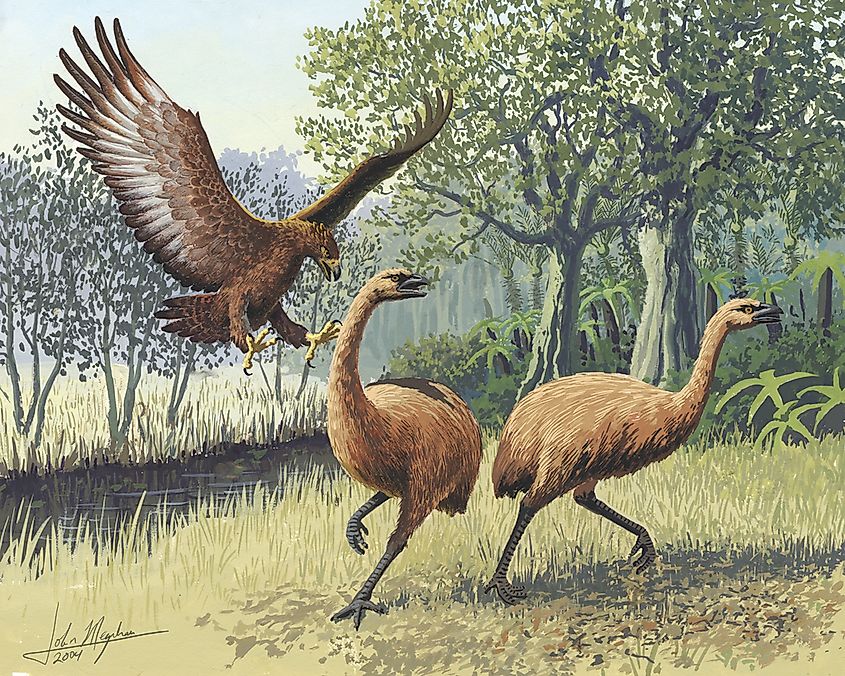
The largest species of eagle as yet shown to exist was the Haast's Eagle (Harpagornis moorei), which soared New Zealand's skies only 500 - 600 years ago. Its dimensions and behaviors have been cataloged using a combination of skeletal remains and the incorporation of oral traditions passed down by the indigenous Maori people. It is estimated that the Haast's eagle weighed in at a whopping 39 pounds, with a body length of 35 - 55 inches and a maximum wingspan of about 9.8 feet. It used its considerable strength to hunt moa (i.e., nine species of large, flightless birds), and according to some legends, could even carry off children in the clutches of its tiger-sized talons. Ultimately, this apex bird of prey fell victim to the overhunting of its primary food source by humans.
Tyrannosaurus Rex
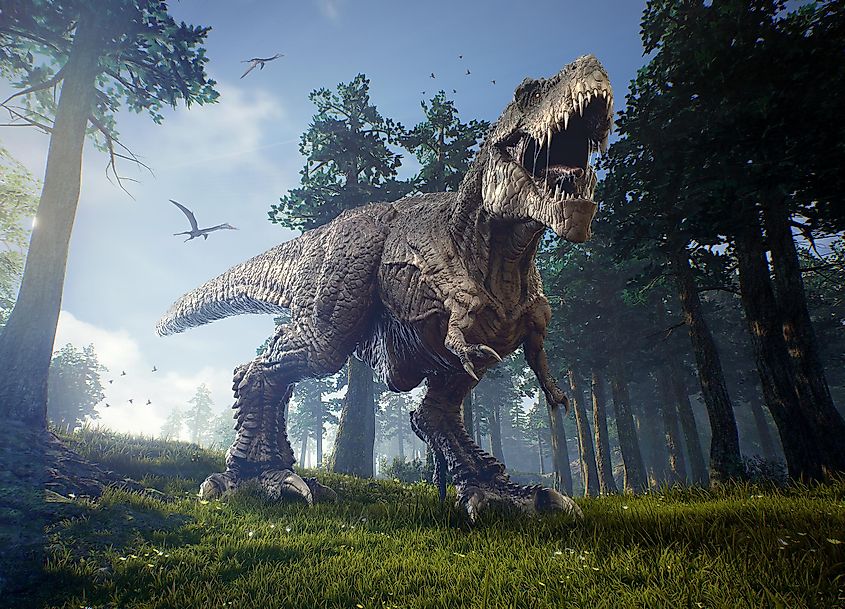
Tyrannosaurus rex is one of the most well-known dinosaurs and one of the most dangerous predators ever to exist. The "king of the tyrant lizards" stomped around Western North America during the late Cretaceous period, approximately 68 million years ago. It used its muscular legs and tail, powerful jaw filled with 60 eight-inch-long serrated teeth, and 40-foot-long, 12-foot-high, 5.5 to eight-ton frame to reach the top of the food chain. The T-rex wasn't the fastest hunter around, but it could go toe-to-toe with anything, including rival T-rexes. The only thing capable of bringing down this carnivore was the Cretaceous-ending comet or asteroid that killed three-quarters of life on Earth and all but the avian dinosaurs.
Titanoboa
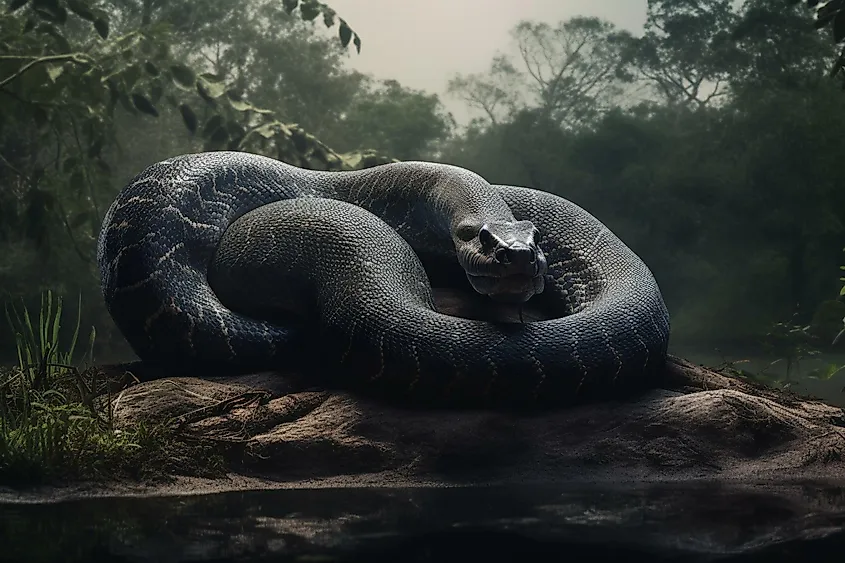
The largest land-dwelling vertebrate to arise in the aftermath of the dinosaurs' collapse is also the biggest snake to have ever existed: Titanoboa! Fossilized vertebrae from numerous specimens dwarf that of the modern-day anaconda and put it at an estimated 42 feet in length, with a scale-tipping weight of 1.3 tons. The cataloging of Titanoboa cerrejonesis came thanks to an accidental discovery at one of the biggest open-pit mines in the world, in Colombia's Cerrejon basin. 58 to 60 million years ago, this area would have been a massive floodplain within a vibrant tropical rainforest – a perfect domain for such a sinister serpent. Like its contemporary cousins, the boa and anaconda, Titanoboa used its enormous, muscular body to constrict its unlucky prey.
Gigantopithecus
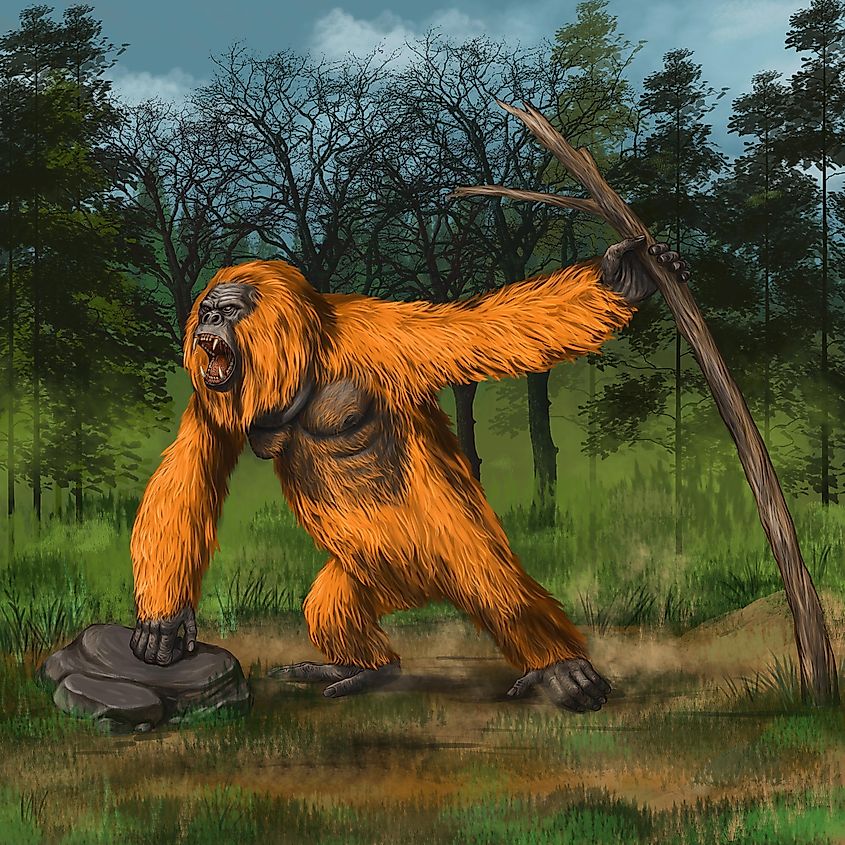
While some cryptozoologists are still hoping to prove the existence of Bigfoot, such a creature definitely did exist until as recently as 100,000 years ago. Gigantopithecus was the largest ape to have ever lived, standing as tall as 10 feet and weighing upwards of 1,100 pounds. Its startling girth served as an advantage during its six to nine-million-year reign throughout what is now South China, but when the climate abruptly shifted during the last Pleistocene ice age, it could no longer meet its high caloric needs. While Gigantopithecus, like other apes, is believed to have subsisted primarily on fruit, and as with modern-day apes, hominids would have surely sought to keep their distance from such an intimidating and potentially-threatening primate.
Giant Short-Faced Bear
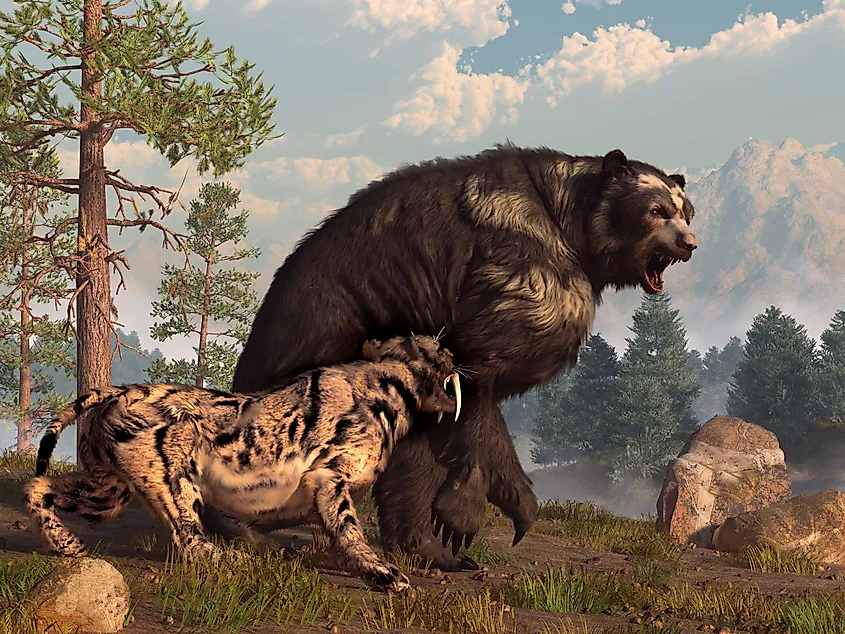
From the largest-ever ape to the biggest bear of all time, the Pleistocene was truly an era of megafauna. Arctodus simus, or the "giant short-faced bear," was the most-powerful meat-eater in the Western hemisphere between about 500,000 to two-million years ago. The South American subspecies outclassed its North American counterpart, reaching up to 12 feet in height (if standing on its hind legs) and weighing around 3,500 pounds. For reference, a 2,200-pound polar bear is the largest ursine yet discovered in modern times. Interestingly, despite the unprecedented mass of the short-faced bear, because of its long legs and straight toes, it is believed to also be the fastest bear to ever grace (or rather, terrorize) the planet.
Saber-Toothed Cats
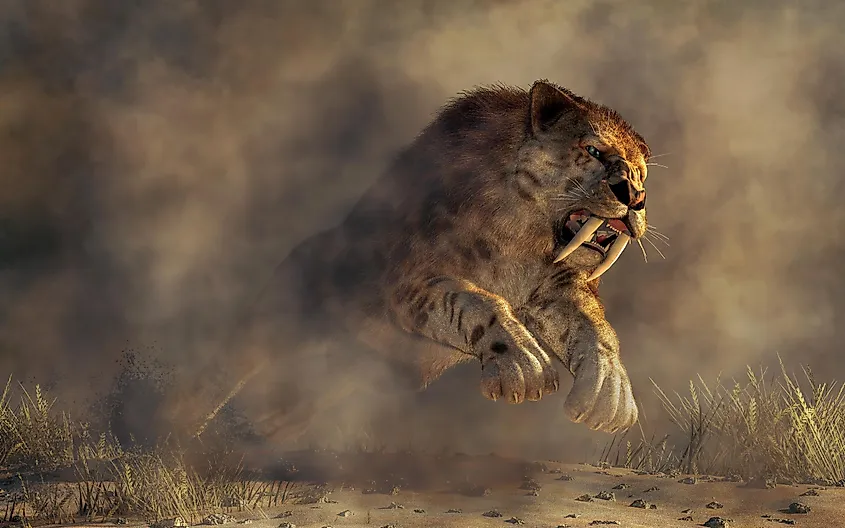
One last Pleistocene predator that would have surely been the subject of nightmares for our hunter-gatherer ancestors was the saber-toothed cat (Smilodon fatalis). As suggested by the scientific name, an encounter with this far-reaching feline (coast to coast from Southern Canada down to Peru) would not have gone favorably. Though shorter than present-day lions, saber-toothed cats were about twice as heavy. They also had an additional weapon at their disposal – the seven or eight-inch-long canine teeth, after which the common name was derived. These stocky hunters used ambush tactics to take down slower-moving mammals such as bison, sloths, juvenile mammoths, mastodons, and perhaps even unsuspecting humans. These frightening cats appeared in the fossil record approximately 800,000 years ago and hung on until the end of the last ice age, sometime between 8,000 to 10,000 years ago.
While 21st-century humans have learned to fend off or strategically distance themselves from many potentially deadly animals, there are few living entities that compare to these nine prehistoric monsters. Sure, all living beings have the right to operate according to simple biological needs, but at the same time, no one wants to be eaten! It would be a lot more psychologically taxing to commute to work, swim in the ocean, or walk in the woods knowing that such beasts were around. Thankfully, we can instead geek out on fossils and make thrilling fictional movies, for Mother Earth has closed the chapter on these dangerous creatures.











